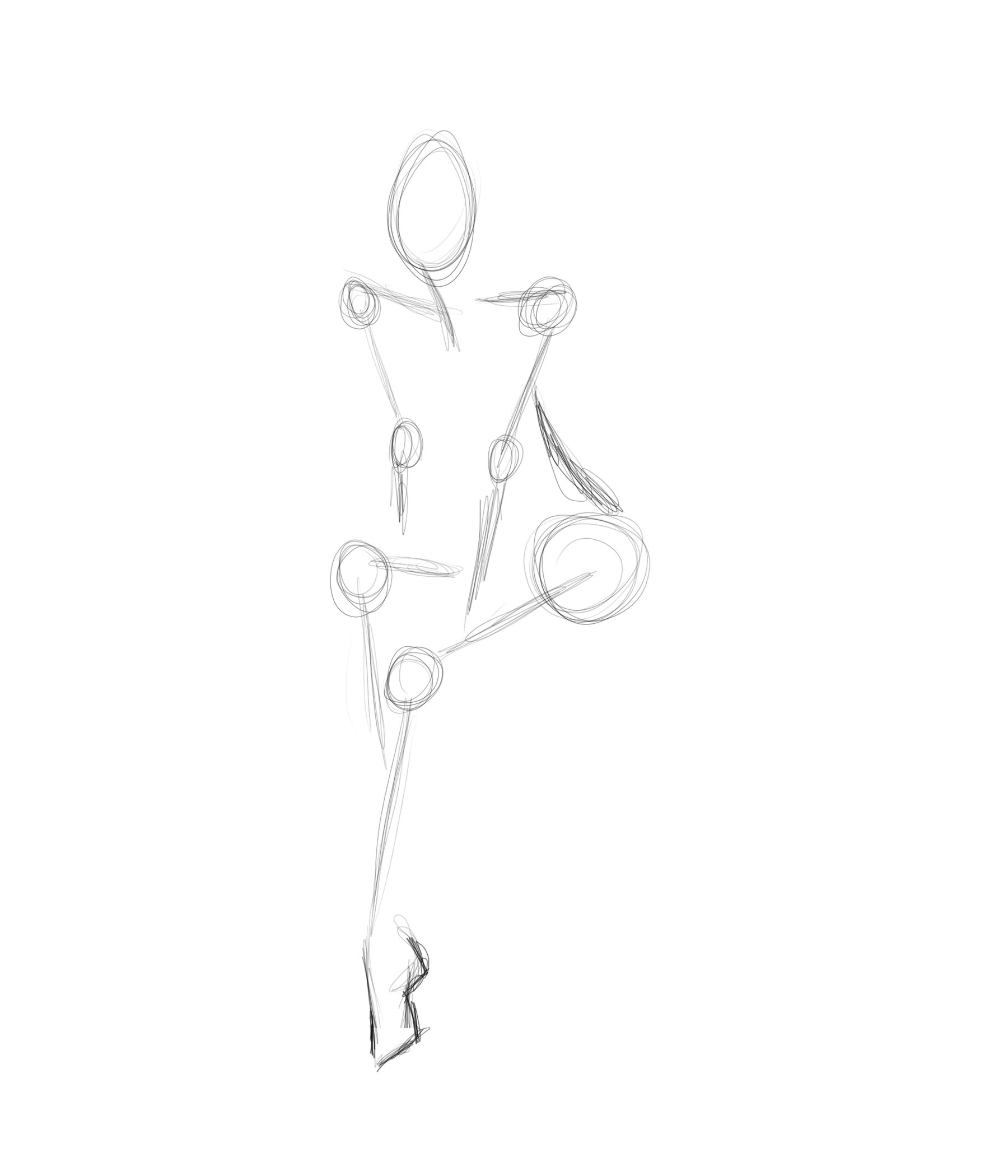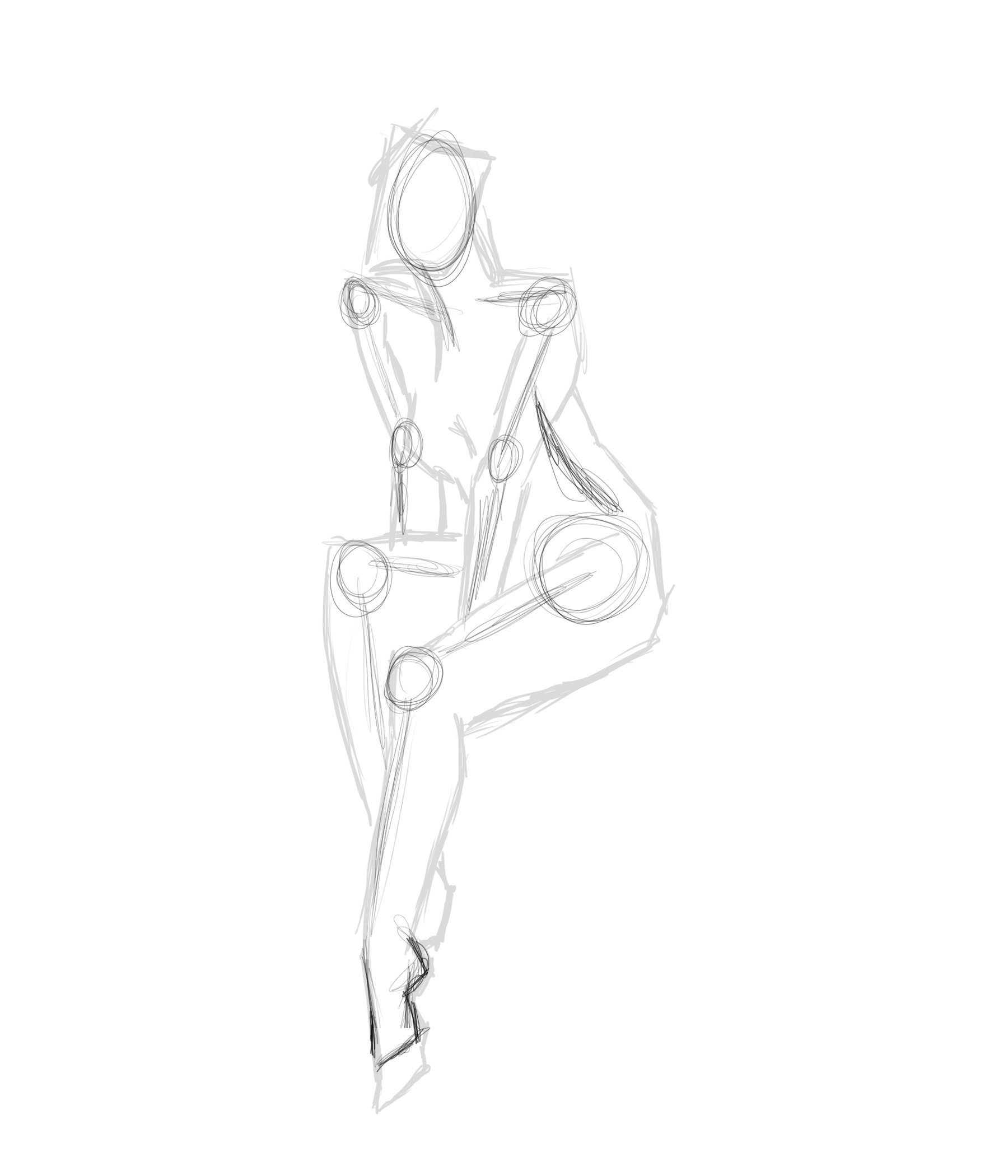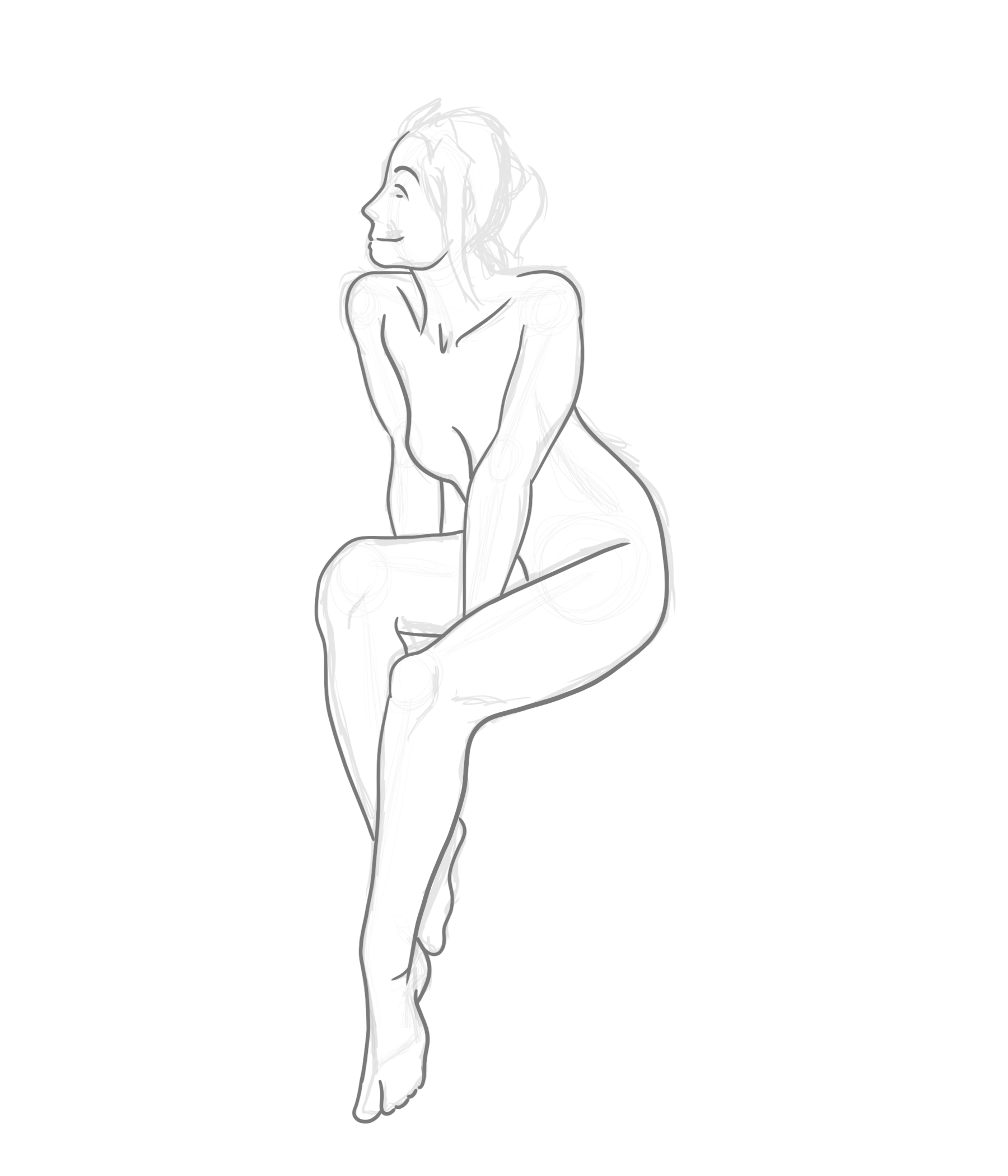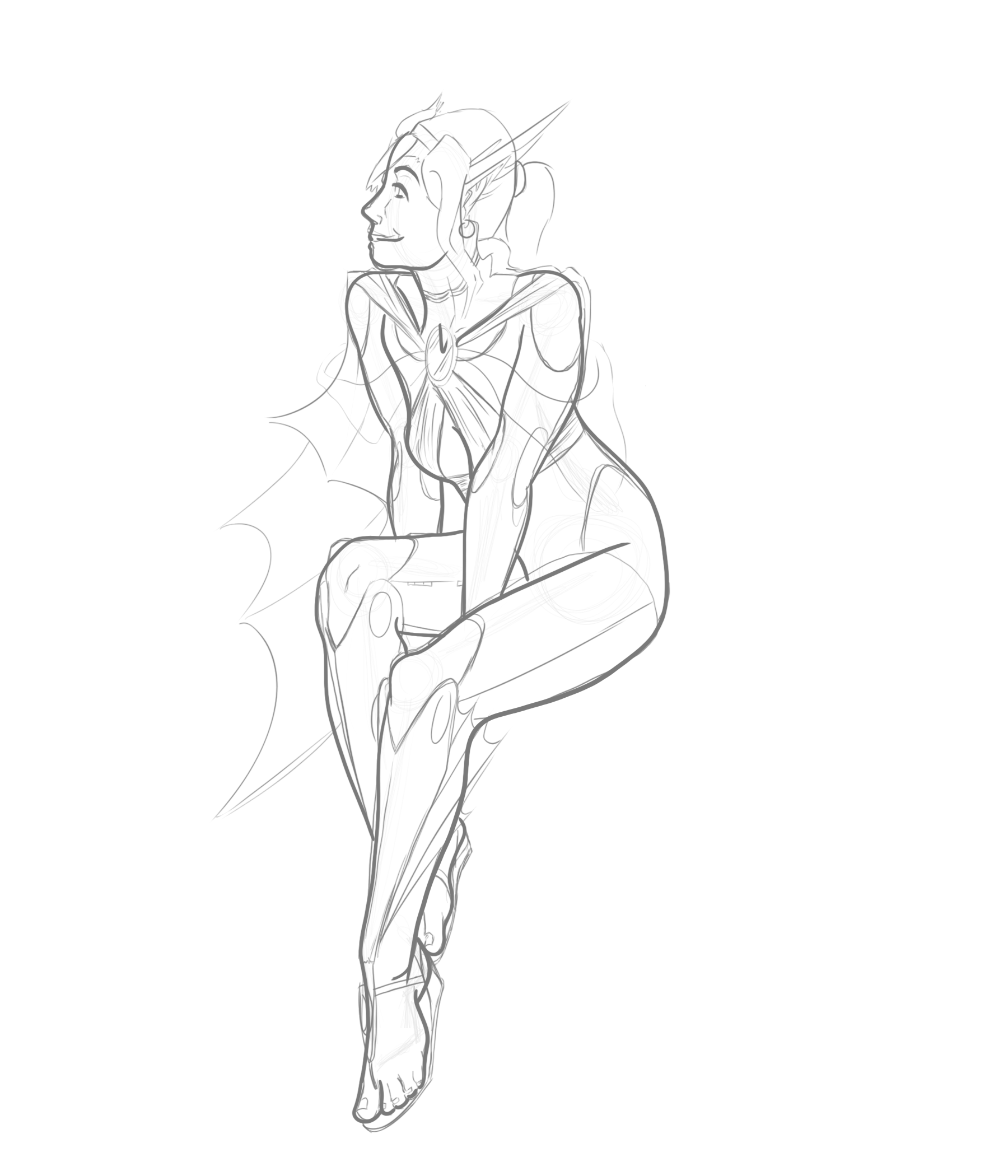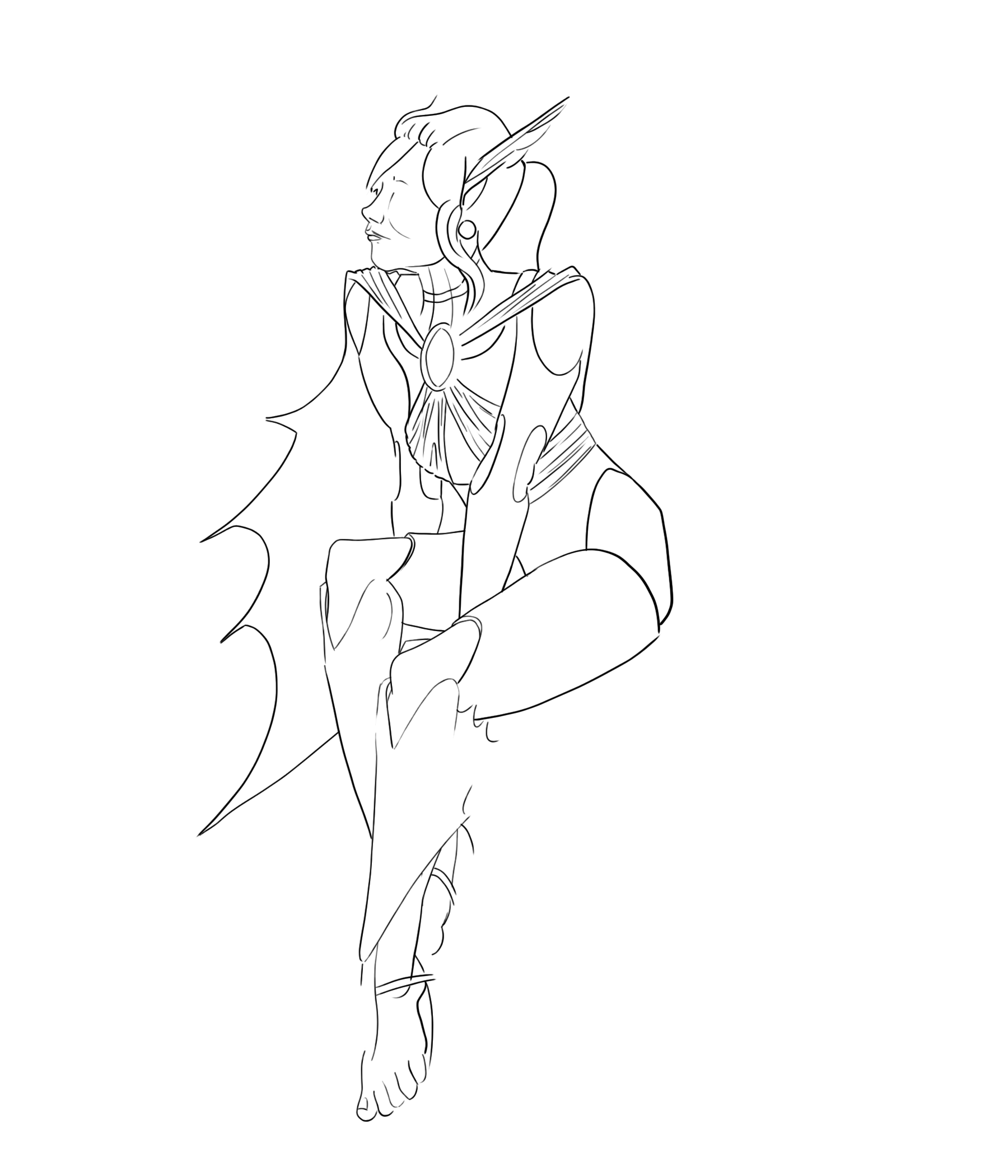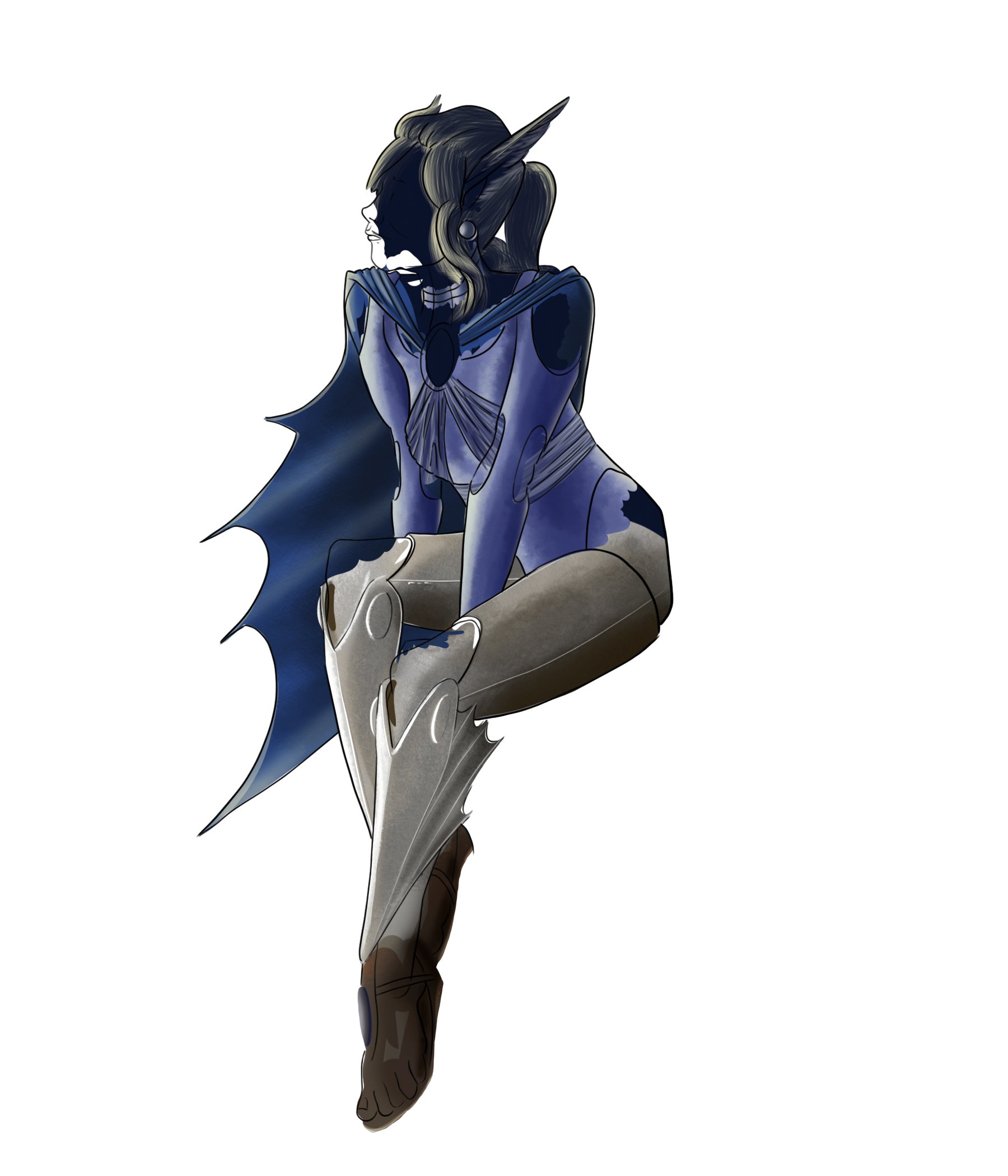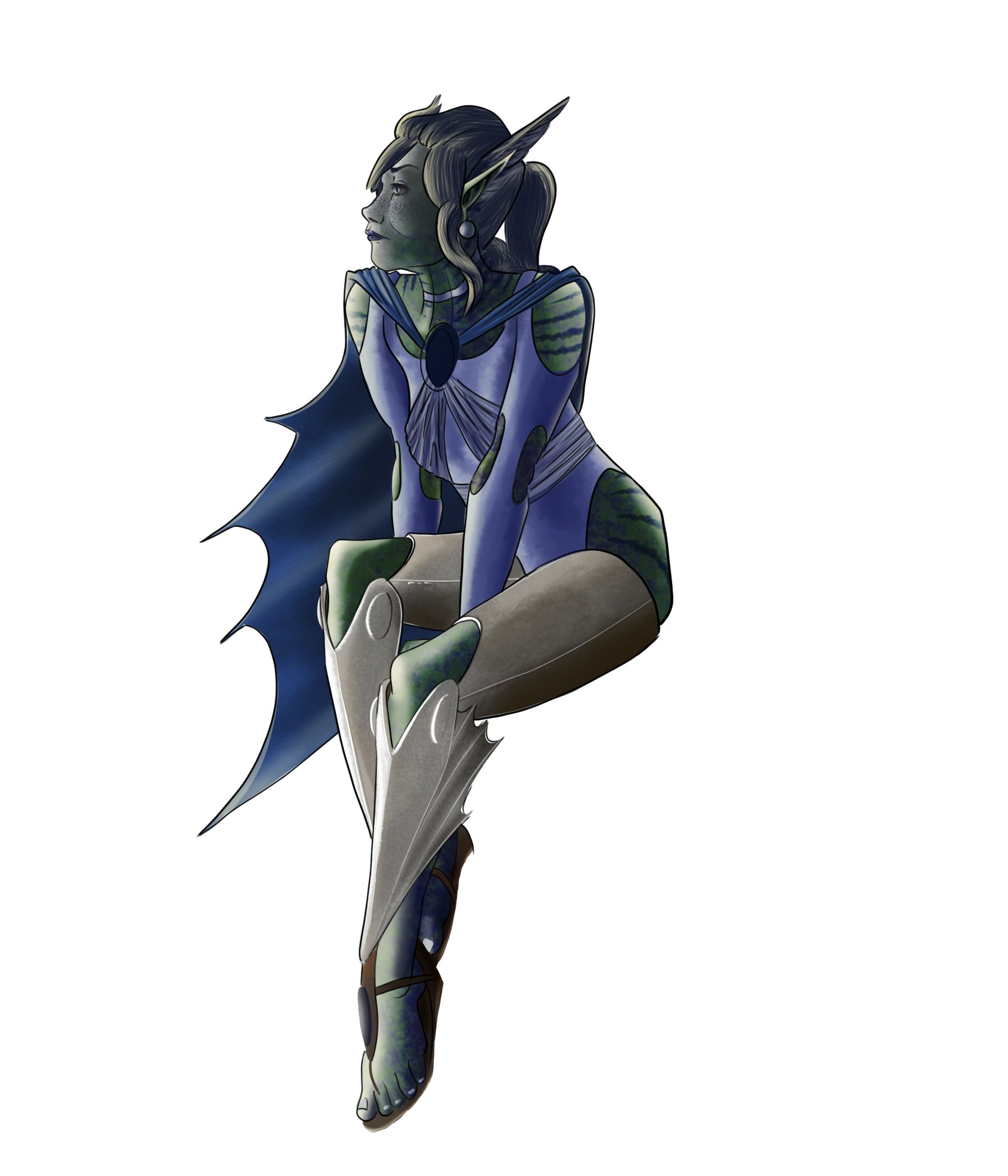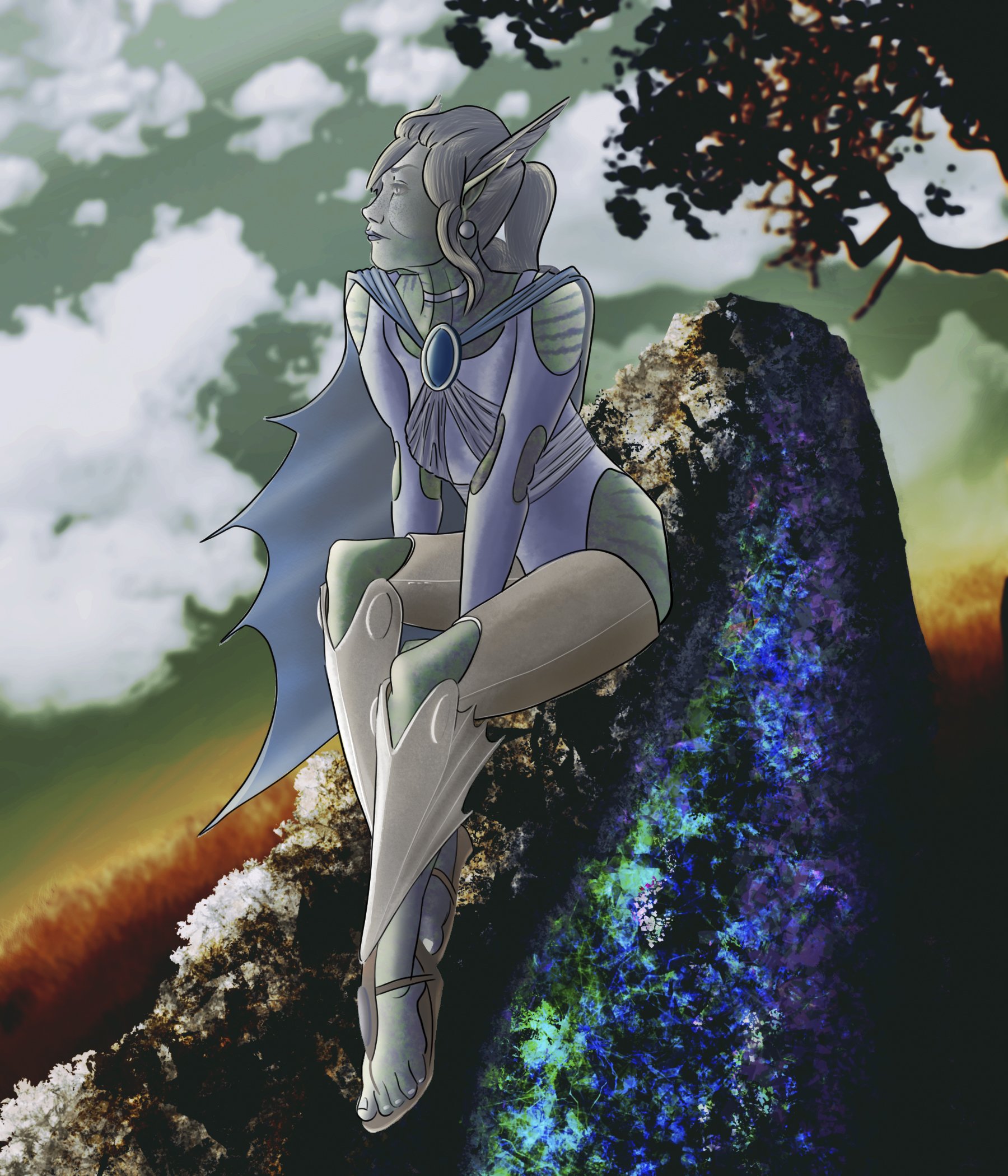Skaia Process
Exploring form with Skaia

This is Skaia. She is a wandering River-Elf. Roaming the world from place to place, she takes in the sights where she lands.
But how did she get here? What makes her this way?
Let’s take a look at the breakdown to discover how she came to be. How I bring her to form from a blank page. Skaia will lead us to see what goes into developing a believable humanlike shape on a flat surface. Analizing the basics and foundations of the illustrative process to build something from nothing.
I like to start out by establishing a frame. I can roughly estimate proportions as well as pose with this. It’s easy to draw lines and circles. So I start there to build around.
Next I will rough out some lines until I find a sensible outline. It doesn’t need to be accurate, it just needs to establish an idea of a reasonable body-mass.
Moving into the rough elements, I like to begin incorporating more definitive features. This could involve hair, facial features, protruding bones, or other topographical elements.
Once I have a rough character sketch, I begin the contouring process to fined the fine, pin-pointed outlines of a character. This is where the definition begins to present itself.
Once I get rid of the underlying sketch, I can begin to establish who this character is starting to become. I can get a better sense of body-masses, what details should round out and support this character this character, and what additive features belong in the scene.
When I have a proper contour, I like to begin adding and otherwise play around with the supportive detailing elements. This can help bring out some personality to a character.
With the last round of sketches, it really helps to add the same level of contours to the basic shapes to better define cohesiveness.
I like to double back by layering the Dark over the light contours, this way I can observe the mixing of hard contrasting shapes to soft detailing lines.
I like to layer in my color features so I can focus on individual elements to a character. This allows me to work freely of concern or distraction of non-related elements.
Just as with the previous stage, I layer on remaining elements one at a time. This allows me to focus on working from proximity, or by color to establish working contrasts.
Layering everything together helps ensure that it not only fits appropriately but that it all works together as well. At this stage, it’s important to ensure everything builds contrast together. This way you can see the image piece by piece.
Last thing is building a background. A good background will either complement or contrast with the character for emphasis.

